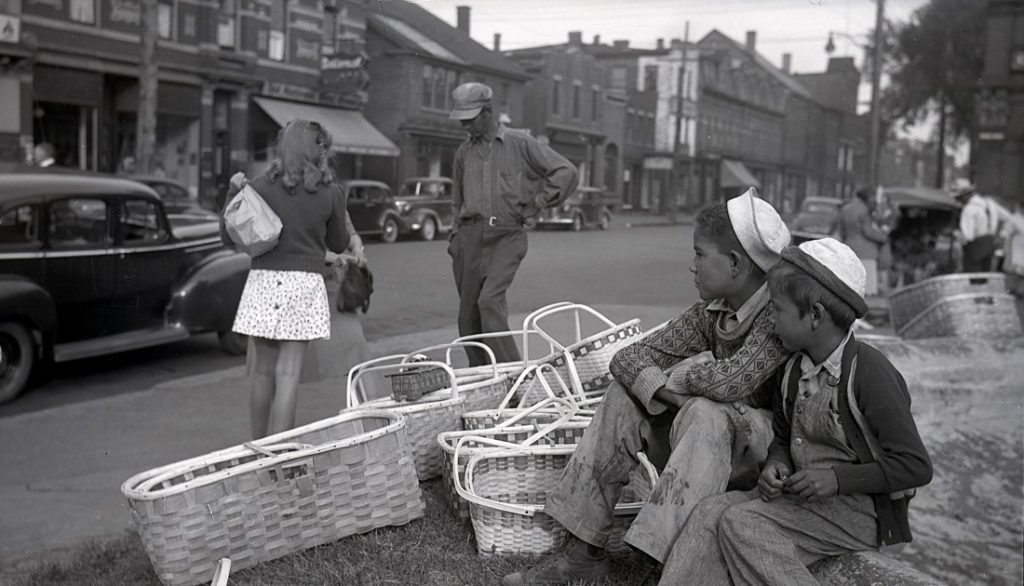
Materials required: chart paper, whiteboard, projector, logbook, tally sheets, graph paper
Tell the students again about the importance to Indigenous people of trading once the Europeans started to arrive and settle in the 18th century.
- Make a class chart of things Europeans would want or need to know from Indigenous people (furs, treatments for curing illnesses, fish, game, modes of transportation [sleds, canoes], edible food). Do the same for Indigenous people (gunpowder, guns, blankets, some food, clothing).
- Now look at the list again. How has this list changed from the 18th century to the middle of the 20th century? Look at the picture above. What is it that the Wolastoqey boys at the Fredericton market are offering? Look at the list again. Are the items they are selling as necessary for survival as they were two hundred years earlier? What do you think changed? Are these items still made and sold by Indigenous people?
- Now conduct your own classroom survey.
Before you begin, answer the following questions:- Think of five things that you cannot live without. List them.
- Where do you get them?
- Who pays for them?
- If you don’t pay for them yourself, what do you do in return to help whoever pays for them?
- Could you still have these five things without help from others?
- Now conduct your own survey:
- Decide what information you want to find out. Write a statement like:
‘I WANT TO DISCOVER WHAT FIVE THINGS MY CLASSMATES CAN’T LIVE WITHOUT AND HOW THEY GET THEM …’ - Decide how you will collect the information or data.
- Will you do interviews and record answers on a tally sheet?
- Will you set up a booth where classmates can answer survey questions?
- Decide what information you want to find out. Write a statement like:
- Design your survey. You will need to:
- Set up your questions as yes-or-no questions, or checklist, or statements that ask people to use a rating scale.
- Survey as many of your classmates as possible.
- Analyze the data.
- Tally the answers to your survey questions. You can use a tally sheet to combine the answers.
- Decide what the data tells you about ‘trading’ in your life.
- Are the items identified by your classmates similar?
- Do you pay for everything or are some things traded?
- Do other people pay for some things?
- What do your classmates do in return to get these items?
- Sharing the data.
- Make a bar graph or choose another way to present your data.
- Write a paragraph telling how ‘trading’ has changed from when it was set up between Europeans and Indigenous people.
- Think back to the beginning discussion. Is your ‘trading’ now as critical (life and death) as it was back then?




